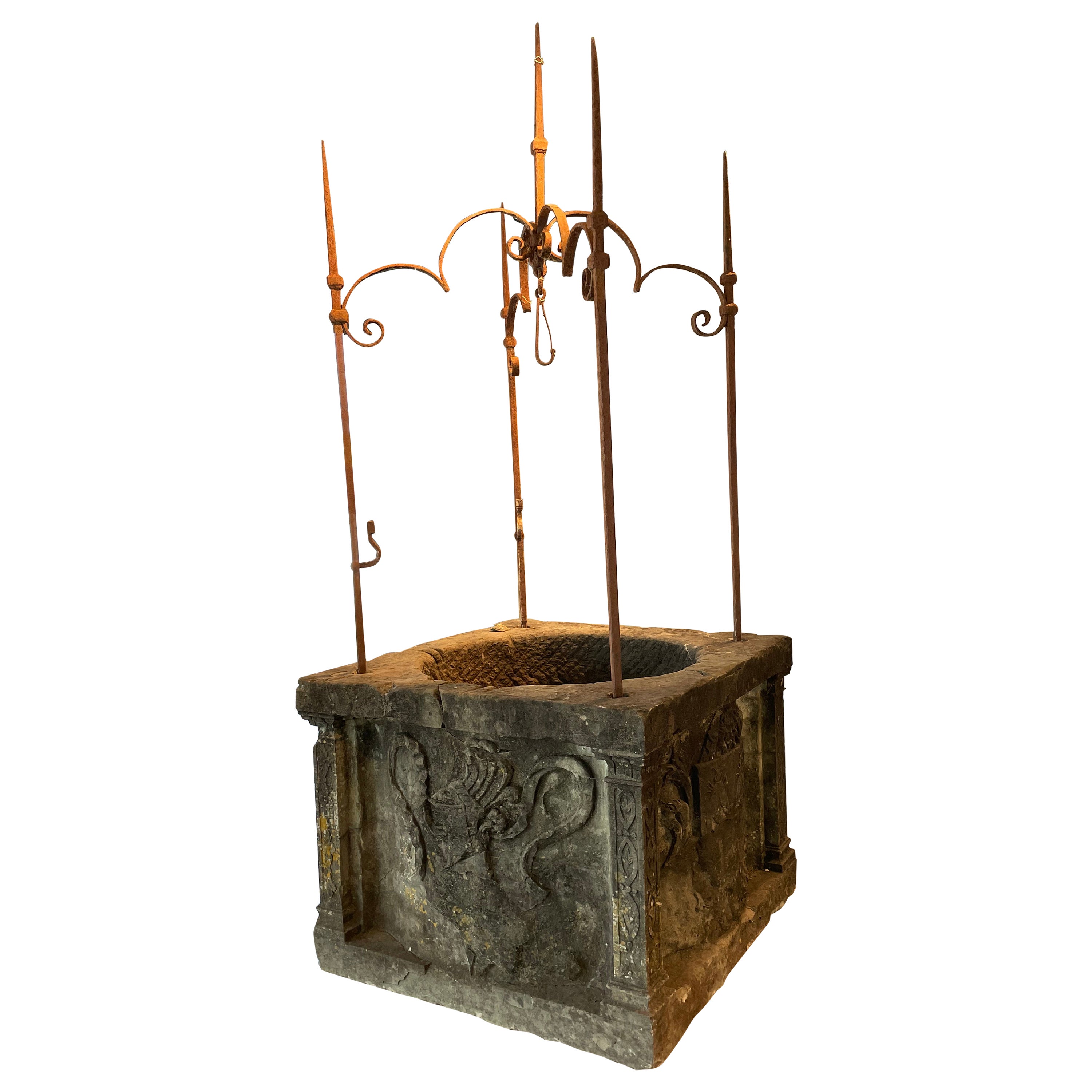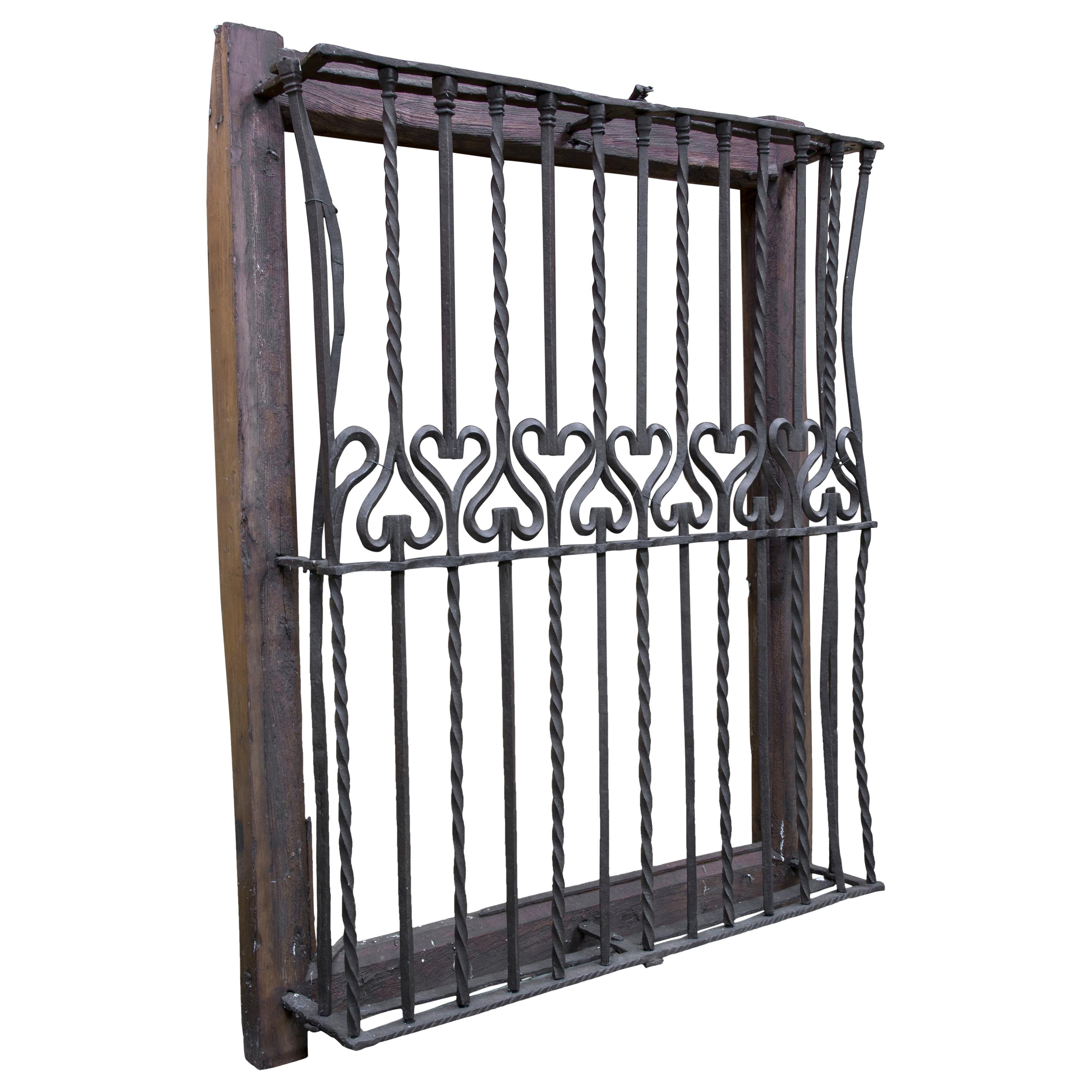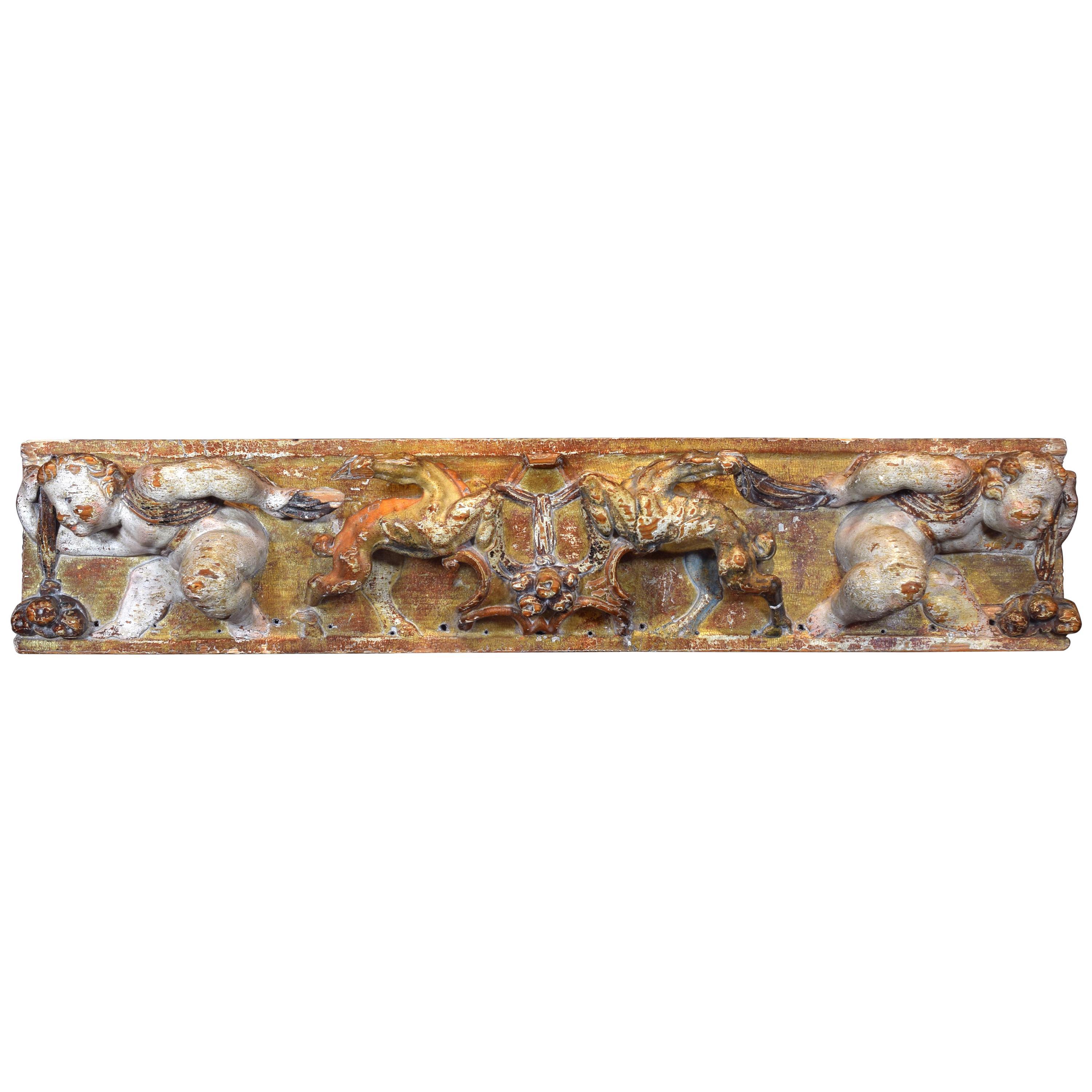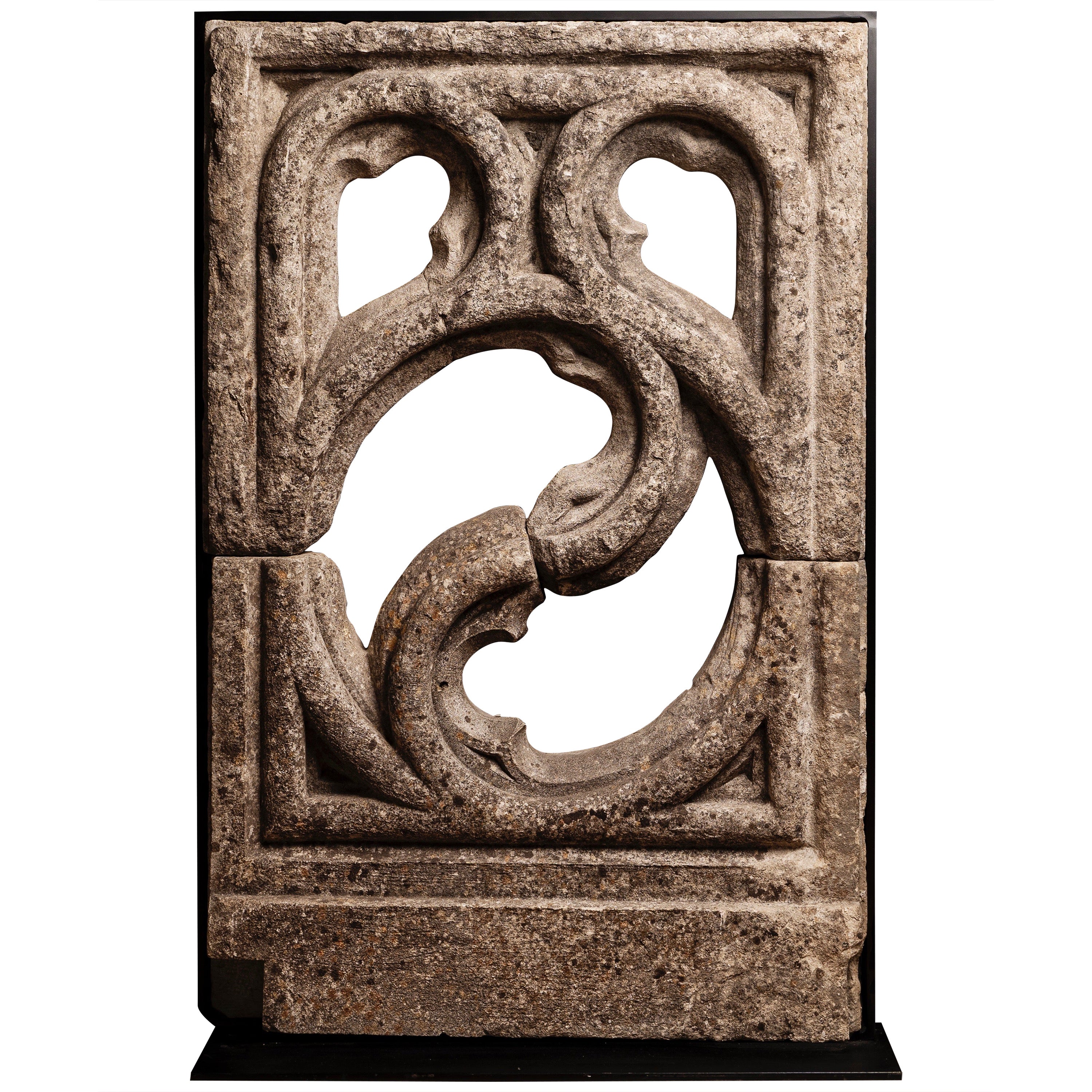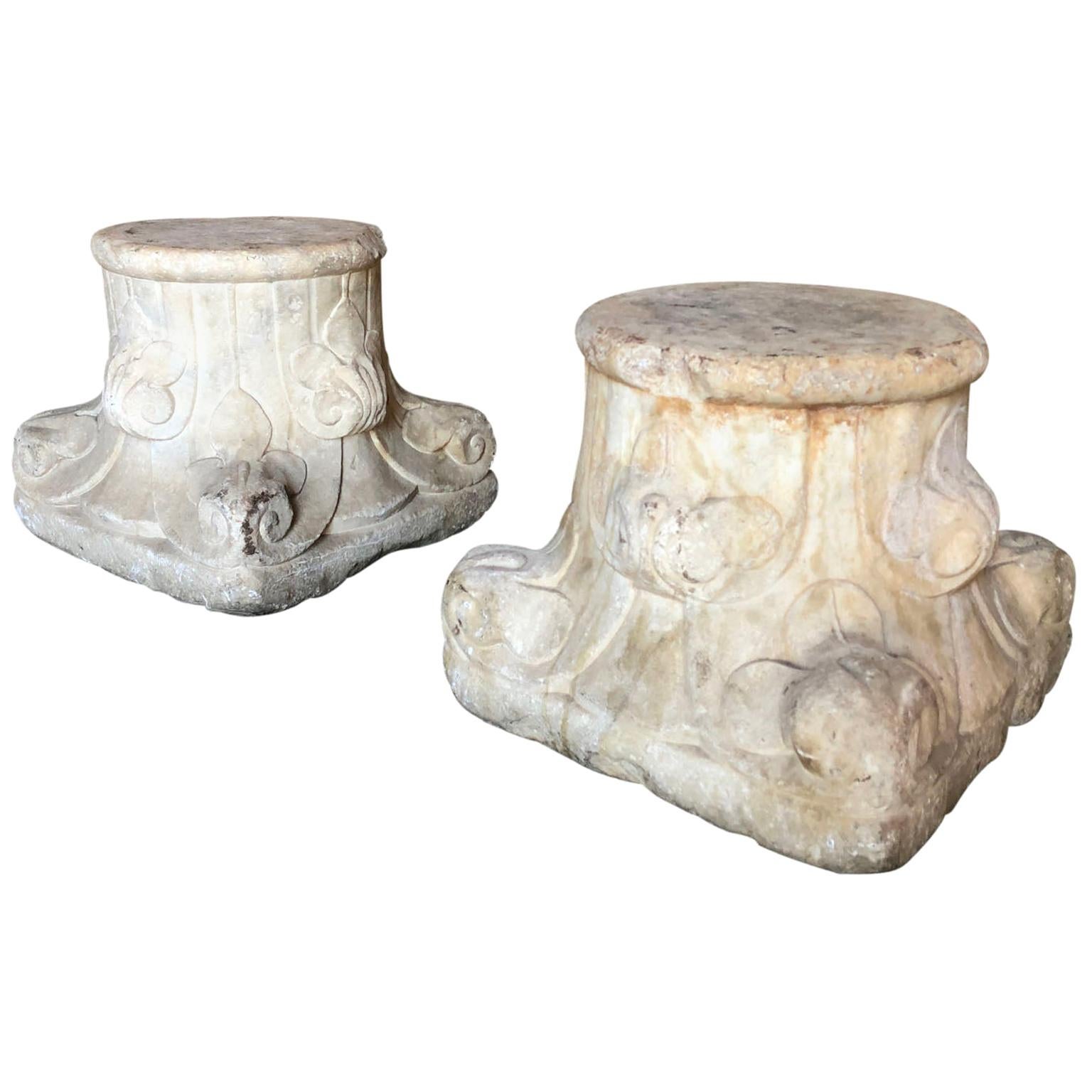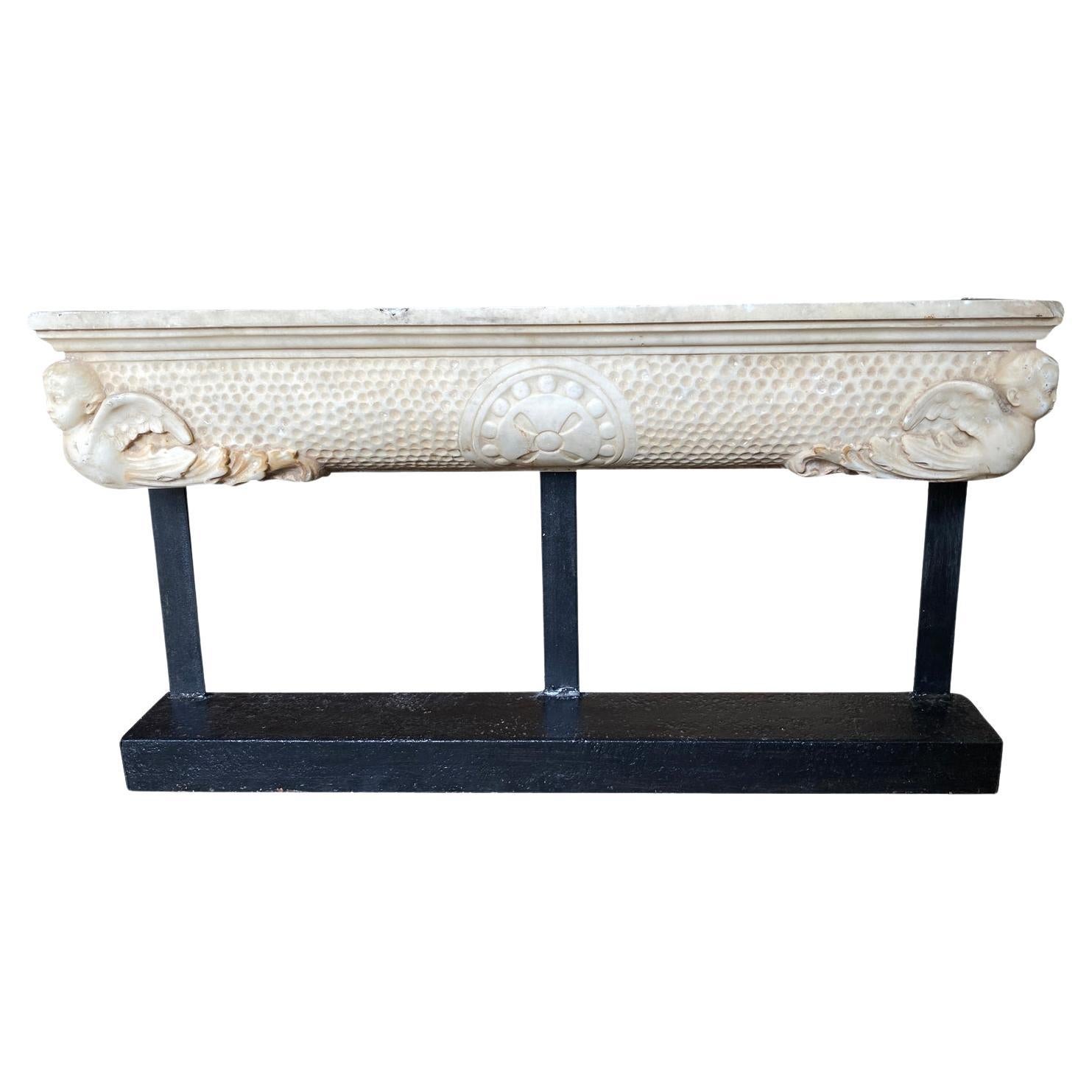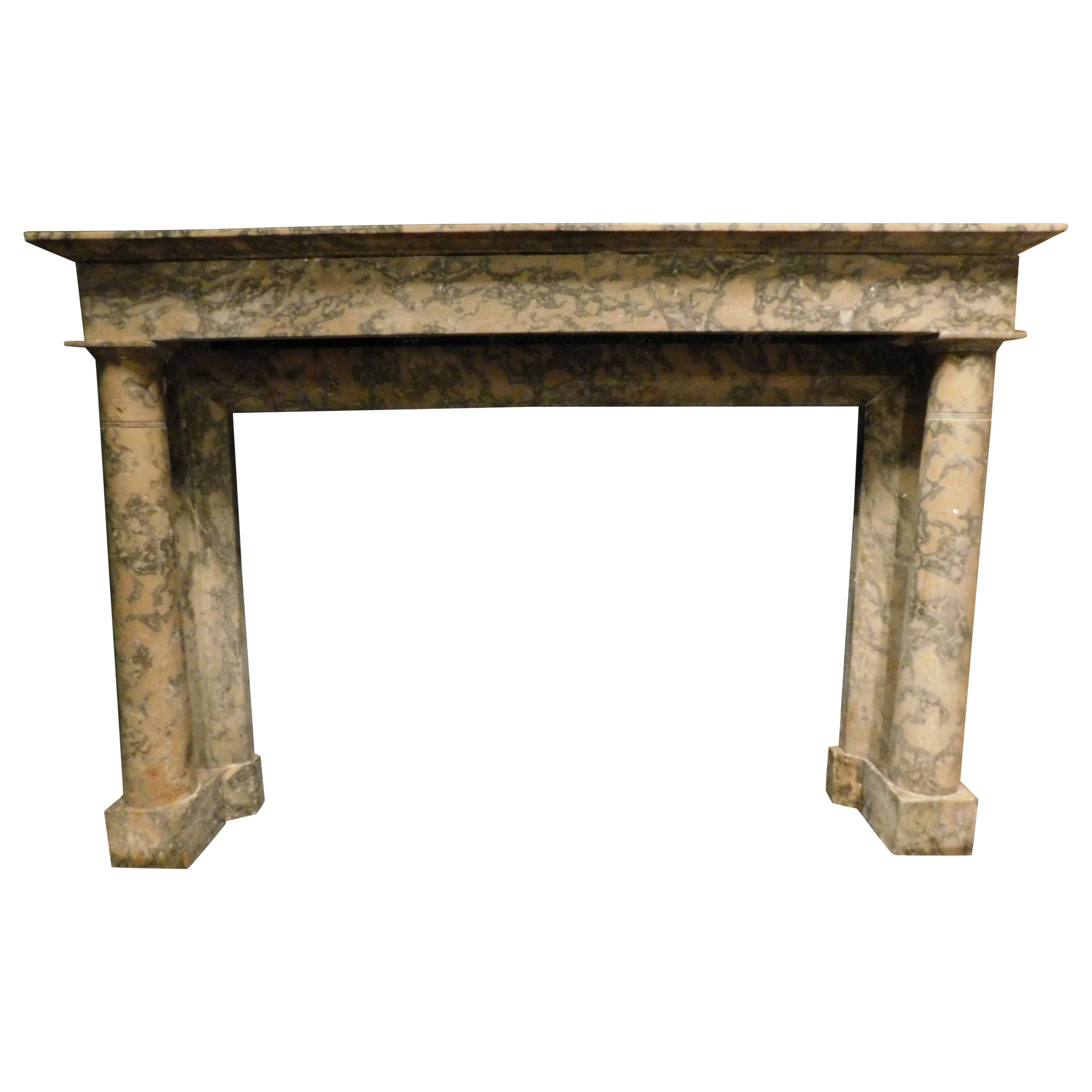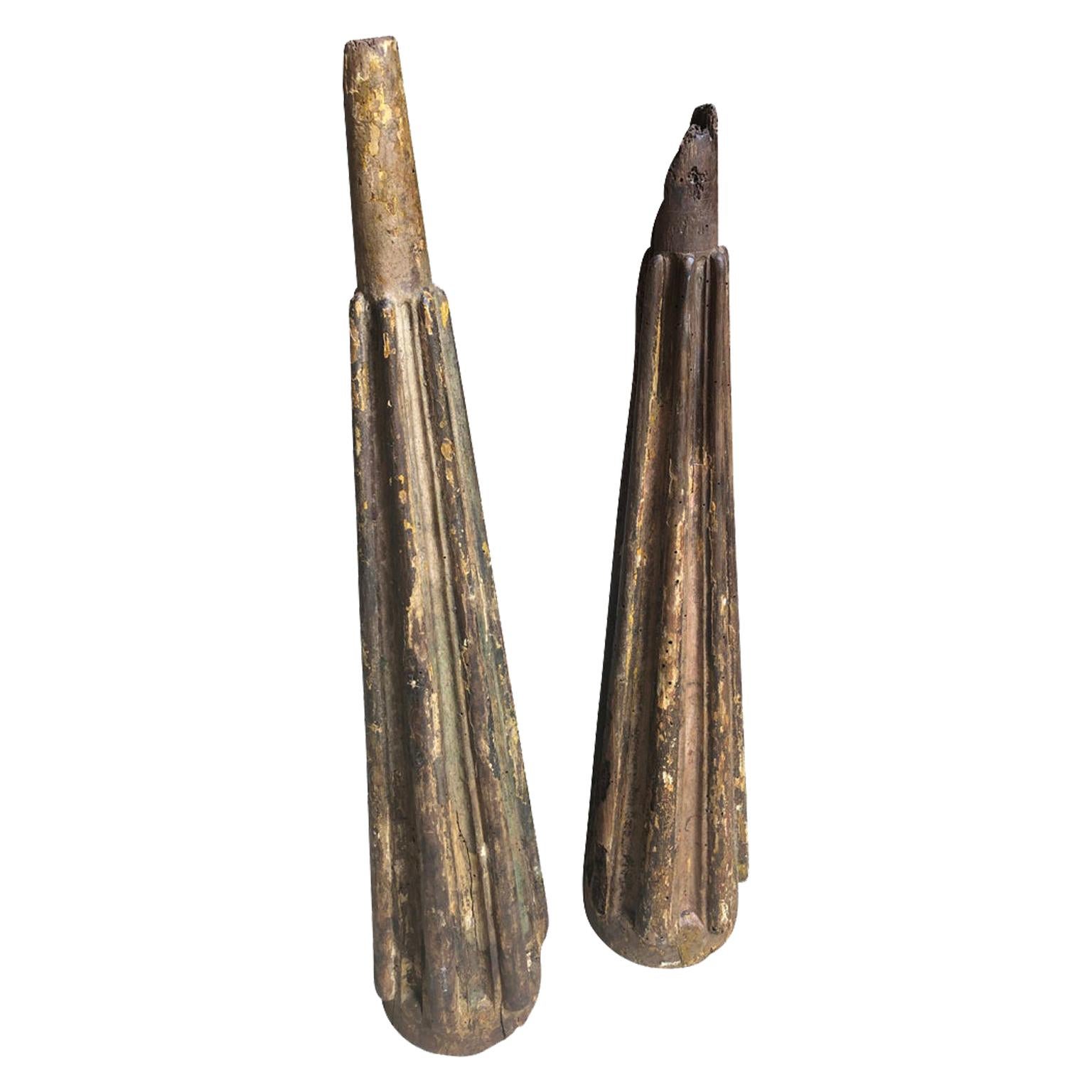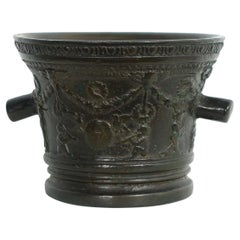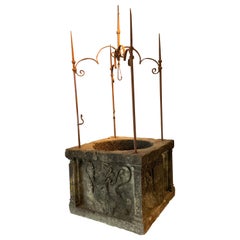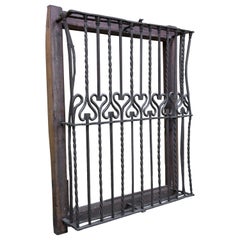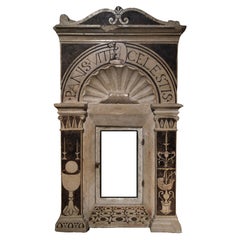
Renaissance Tabernacle Front - Tuscany, first half of the 16th century
View Similar Items
Want more images or videos?
Request additional images or videos from the seller
1 of 6
Renaissance Tabernacle Front - Tuscany, first half of the 16th century
About the Item
- Dimensions:Height: 28.75 in (73 cm)Width: 16.54 in (42 cm)Depth: 3.55 in (9 cm)
- Style:Renaissance (Of the Period)
- Materials and Techniques:
- Place of Origin:
- Period:
- Date of Manufacture:first half of the 16th century
- Condition:Wear consistent with age and use.
- Seller Location:Bruxelles, BE
- Reference Number:1stDibs: LU6666229755292
About the Seller
5.0
Vetted Seller
These experienced sellers undergo a comprehensive evaluation by our team of in-house experts.
1stDibs seller since 2022
6 sales on 1stDibs
Typical response time: 7 hours
More From This SellerView All
- Bronze Mortar, Tuscany, Second Half of 16th CenturyLocated in Bruxelles, BEBronze mortar with garlands, flowers and putti - Tuscany , second half of 17th century. Measures: height 10 diameter : 13 cm Artisans and healers used mortars for grinding food...Category
Antique 16th Century Italian Renaissance Scientific Instruments
MaterialsBronze
- Carved Limestone Balustrade, North of France, First Half of the 15th CenturyLocated in Bruxelles, BECarved Limestone balustrade. In a modern metal frame. North of France, Ile de France or Normandy. End of the 14th century - first half of the 15th century. Measures: 90 x 62 x 8...Category
Antique 15th Century and Earlier French Medieval Architectural Elements
MaterialsLimestone
- renaissance wooden candelabrum and painted cross - Umbria, 16th centuryLocated in Bruxelles, BEBase of a carved wooden candelabrum, polychrome and gilded; cross painted on both sides. Umbria or Tuscany, 16th century 136 x 43,5 x 30 cm (The cross and the base of the candelabrum were later assembled) The base of the candelabrum is intricately carved and adorned with polychrome and gilded finishes. The shafts take on the shape of balusters reminiscent of ancient columns, feature ornate foliage decorations, garlands and winged cherub faces. The feet are crafted in the likeness of lion paws. The base is further embellished with depictions of four saint martyrs, among them Saint Barbara and Saint Catherine of Alexandria. The plasticity of the figures, outlined with strong contour lines, the clear and vibrant colors, are stylistic elements linked to the Umbrian tradition of the sixteenth century.The precisely defined and elegant drawing, along with the clear color palette applied with refined chiaroscuro modulations, became the signature of a style that would leave a lasting mark on the era to come. This is exemplified by a preference for vibrant, multicolored images, accentuated in this case by the use of red and pink in the saint's attire. A notable addition, introduced later, is a polylobed cross painted on both sides. On one side, the Crucifixion is vividly portrayed:The treatment of the corpus itself is in line with High Medieval practice, emphasizing pathos by showing Jesus dead, his arms sagging from the weight of the body. The upper section displaying a pelican pecks at her breast to feed her young with her own blood; a symbol of the sacrifice of Christ on the cross whose body and blood similarly nourishes the celebrant during Mass. The lower part depicts Golgotha. On the reverse side, the Resurrection is artistically presented in a Renaissance iconography, reminiscent of the renowned composition painted by Piero della Francesca, now housed in the Civic Museum of Sansepolcro. In terms of composition, with the frontal depiction of Christ holding the banner, this motif became particularly widespread in central Italy, spanning from Tuscany to Umbria throughout the 16th century.. The double-sided construction suggests that it may also have been carried in liturgical processions. In Umbria from the 14th century, the use of portable crosses painted on both sides had become a widespread practice, aimed at satisfying the monastic clientele that had significantly increased following the establishment of new religious communities. The earliest surviving Tuscan painted crucifix represent Christ as Christus Triumphans, or the “Triumphant Christ” with his head up and eyes open. This form was supplanted in the 13th century with the Christus Patiens, or “Suffering Christ” type who is shown often with his head fallen on his shoulder and his eyes closed, as In our cross. The iconography of the suffering Christ appears to have developed out of a new interest in Christ’s human nature, the development of the feast of Corpus Christi and with increased importance given to the Eucharist. The process of humanizing the figure of Christ reaches its peak with the abandonment of all the previous expressive conventions in favor of more realistic details we can observe in this Crucifix, such as the swollen belly, the arms stretched to the limit of muscle tearing, the body falling heavily forward, the abundant blood on the wounds, and the cross firmly embedded in the rock of Calvary. It's worth noting that Renaissance candelabra...Category
Antique 16th Century Italian Renaissance Figurative Sculptures
MaterialsWood, Giltwood
- Massacre of the Innocents, Normandy, Late 16th CenturyLocated in Bruxelles, BEThe Massacre of the Innocents Carved oak panel Normandy, late 16th century (Collection labels on the back) Measures: 43,5 x 61 cm.Category
Antique 16th Century French Renaissance Wall-mounted Sculptures
MaterialsOak
- 16th century Brussels tapestry - The Story of DavidLocated in Bruxelles, BE16th century Brussels tapestry The Story of David Brabant, 16th Century Monogram at the bottom left. 320 x 250 cm This splendid Brussels tapestry, crafted from wool and silk during ...Category
Antique 16th Century Belgian Renaissance Tapestries
MaterialsWool, Silk
- Group of Altarpiece - Antwerpen, 16th centuryLocated in Bruxelles, BEGroup of altarpiece representing the life of a Saint, Saint Renualde? Engraved by the sign of Antwerp hand on the hat of the central character Carved oak, traces of polychromy Fir...Category
Antique 16th Century Belgian Renaissance Figurative Sculptures
MaterialsOak
You May Also Like
- Renaissance Grille, Wrought and Gilt Iron, Stone, Spain, 16th CenturyLocated in Madrid, ESChapel grille with two fixed leaves at the sides, and double opening leaf in the center, topped with an elaborate crest, all made of wrought and "blued" iron, creating a polychrome preserved in good condition. The bars of the lateral zones, tubular, are decorated with discs of the same diameter. The double door of the center presents bars ballasted to the center flanking a disc and other similar disks up and down; in the lower area, there is a frieze with two opposing "ces" accompanied by simplified plant elements that draw volutes towards the sides; note the small wheels at the bottom of the grid. The crest presents an oval shield with the cross of the Order of Calatrava, enhanced with architectural elements and flanked by vegetal "S-shapped" motifs, accompanied by leaves; to the sides of this central piece appear two columns of ajarronado shaft enhanced with "C-shapped-forms" and "S-shapped-forms" drawn in their shafts. In general terms, there is talk of a division in two stages in terms of Antique grills...Category
Antique 16th Century Spanish Renaissance Architectural Elements
MaterialsStone, Wrought Iron
- Venetian 16th Century WellheadLocated in Zedelgem, BE16th century wellhead from Venice, rare find, museum quality that needs a bit of restoration, done by us. The stone it's made out is Italian Pietra Serena.Category
Antique 17th Century Italian Renaissance Architectural Elements
MaterialsLimestone
- Wrought Iron Grille, 16th CenturyLocated in Madrid, ESA carved wooden frame serves as a support for the wrought iron grille that has decorated balusters: all have a heart-shaped form in the centre, whi...Category
Antique 16th Century Spanish Renaissance Architectural Elements
MaterialsWrought Iron
- Frieze, Polychromed Pine Wood, 16th CenturyLocated in Madrid, ESRectangular frieze in carved pine wood, gilded and polychrome decorated with figurative reliefs. An architectural piece with garland serves as the axis for the symmetrical compositio...Category
Antique 16th Century European Renaissance Architectural Elements
MaterialsPine
- 16th Century French Fireplace MantelLocated in Vosselaar, BEA monumental 16th century sandstone Renaissance fireplace mantel. Finely sculpted with a moulded beam and colomn supports. Decorated with flower motives, guirlandes and cirkels. Lov...Category
Antique 16th Century French Renaissance Fireplaces and Mantels
MaterialsSandstone
- Pair of 16th Century Stone CapitalsLocated in Atlanta, GAA sensational pair of 16th century Capitales Sevillanos, fabricated in Italy of Carrara marble and then brought to Seville, Spain. Wonderful architectural elements to incorporate int...Category
Antique 16th Century Spanish Architectural Elements
MaterialsCarrara Marble
$13,500 / set
Recently Viewed
View AllMore Ways To Browse
Stone Garden Figures
Tuscan Garden
Carved Tabernacle
Jesus Christian
Door Handle Stone
Tabernacle Cabinet
Jesus 16th Century
Antique Church Cabinet
Crown Paste
Antique Pagan
Antique Carved Stone Roman
Antique Arcade
Antique Italian White Marble Column
Stone Dolphin
Large Antique Floor Vases
Antique Large Floor Vase
Antique Carved Stone Vases
Antique Communion
